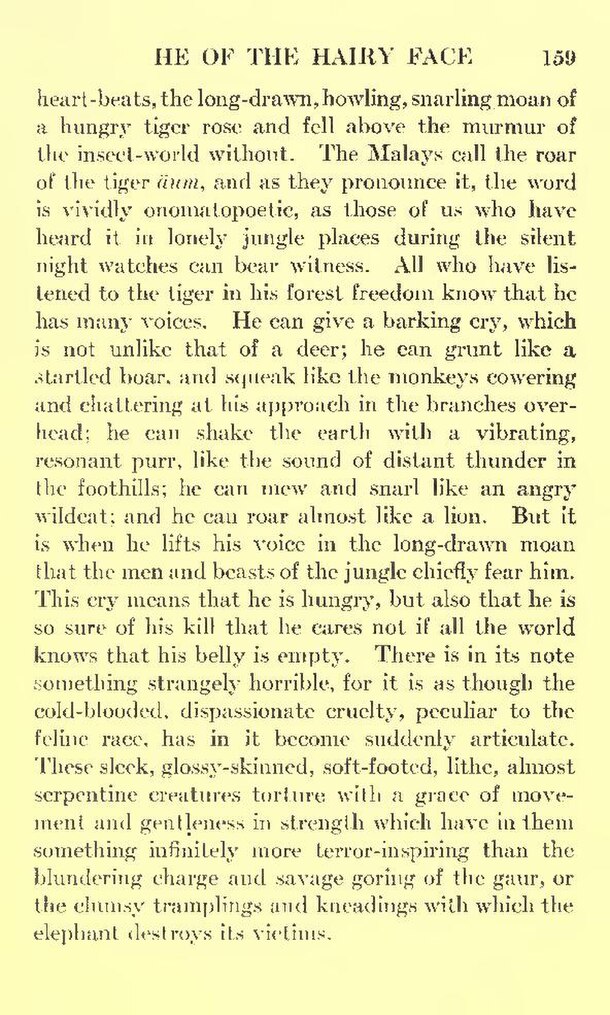heart-beats, the long-drawn, howling, snarling moan of a hungry tiger rose and fell above the murmur of the insect-world without. The Malays call the roar of the tiger äum, and as they pronounce it, the word is vividly onomatopoetic, as those of us who have heard it in lonely jungle places during the silent night watches can bear witness. All who have lis- tened to the tiger in his forest freedom know that he has many voices. He can give a barking cry, which is not unlike that of a deer; he can grunt like a startled boar, and squeak like the monkeys cowering and chattering at his approach in the branches over- head; he can shake the earth with a vibrating, resonant purr, like the sound of distant thunder in the foothills; he can mew and snarl like an angry wildcat: and he can roar almost like a lion. But it is when he lifts his voice in the long-drawn moan that the men and beasts of the jungle chiefly fear him. This cry means that he is hungry, but also that he is so sure of his kill that he cares not if all the world knows that his belly is empty. There is in its note something strangely horrible, for it is as though the cold-blooded, dispassionate cruelty, peculiar to the feline race, has in it become suddenly articulate. These sleek, glossy-skinned, soft-footed, lithe, almost serpentine creatures torture with a grace of move- ment and gentleness in strength which have in them something infinitely more terror-inspiring than the blundering charge and savage goring of the gaur, or the clumsy tramplings and kneadings with which the elephant destroys its victims.
Page:The further side of silence (IA furthersideofsil00clifiala).pdf/181
This page needs to be proofread.
